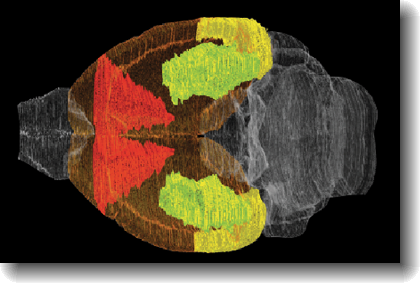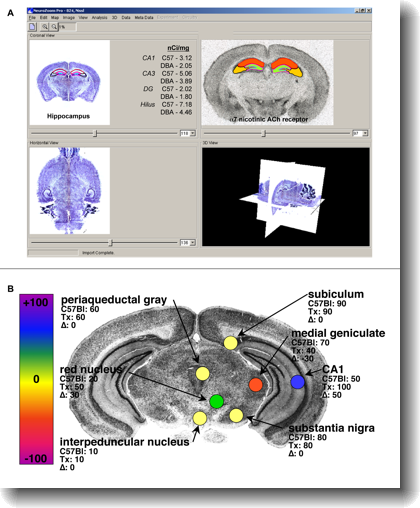Neuroinformatics
BrainPrint - Comparing the Brains
Client - Neurome, Inc.
(Circa 2002) BrainPrint produces digital profiles for comparison of quantitative, spatial and volumetric data from different transgenic models of mice.
Features:
- Standardized Access to Data
- Develop Profiles on Regions and Diseases
- Quick Comparisons Across Transgenes
- Data Mine on Disease Models
Gene expression profiles are visualizedand quantified with BrainPrint.
A normalized digital stereotaxic coordinate space (DSCS) can be created to compare different brains across time and space by using the combination of homologies that are the most invariant among species.
Advantages are:
- Visual and Numerical Indicators Of State
- Data Creates Useful Profiles
- Profiles can Hint at Drug Targets
- Use Profiles to Create a Normal Coordinate System - DSCS
BrainPrint supports digital profiles for comparison of quantitative, spatial and volumetric data from different transgenic mouse models. BrainPrint analyzes all of the experimental data originating from NeuroZoom Pro stored in BrainArchive and identifies those characteristics useful for developing profile information corresponding to certain traits under various phenotypes. Once a brain dataset has been properly described, different genetic conditions may be quickly compared and displayed.
Features
- Standardized Access to Data
- Develop Profiles on Regions and Diseases
- Quick Comparisons Across Transgenes
- Data Mine on Disease Models
Advantages
- Visual and Numerical Indicators Of State
- Data Creates Useful Profiles
- Profiles can Hint at Drug Targets
- Use Profiles to Create a Normal Coordinate System - DSCS

